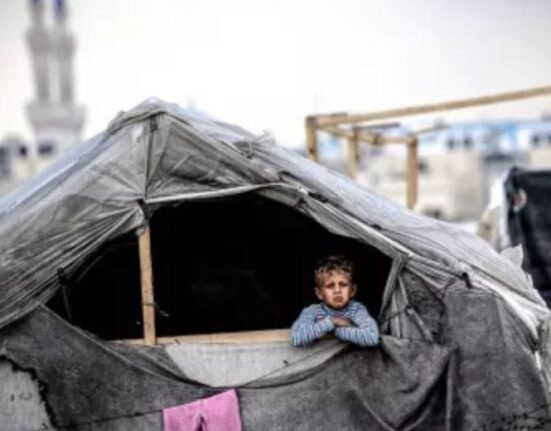HQ Team
July 13, 2023: People facing hunger globally, rose by an additional 122 million last year, because of the 2019 Covid-19 pandemic, weather shocks, and conflicts, according to a UN report.
The 2023 edition of the State of Food Security and Nutrition in the World (SOFI) revealed that between 691 and 783 million people faced hunger in 2022, with a mid-range of 735 million. This represents an increase of 122 million people compared to 2019, before the COVID-19 pandemic.
Hunger, in the report unveiled on June 12, is synonymous with chronic undernourishment and is measured by the prevalence of undernourishment.
Even though progress in hunger reduction was observed in Asia and Latin America hunger was still on the rise in Western Asia, the Caribbean, and throughout all subregions of Africa in 2022.
Africa remains the worst-affected region with one in five people facing hunger on the continent, more than twice the global average.
Five UN agencies
If the trends remain the Sustainable Development Goal of ending hunger by 2030 will not be reached, the Food and Agriculture Organization of the United Nations (FAO), the International Fund for Agricultural Development (IFAD), the United Nations Children’s Fund (UNICEF), the World Health Organization (WHO) and the World Food Programme (WFP) warned.
The State of Food Security and Nutrition in the World is an annual report jointly prepared by the five UN agencies.
It monitors and analyses the world’s progress toward ending hunger, achieving food security, and improving nutrition. It also provides an in-depth analysis of the key challenges for achieving these goals in the context of the 2030 Agenda for Sustainable Development for Zero Hunger.
The report targets a wide audience, including policymakers, international organizations, academic institutions, and the general public.
“There are rays of hope, some regions are on track to achieve some 2030 nutrition targets. But overall, we need an intense and immediate global effort to rescue the Sustainable Development Goals,” said UN Secretary-General António Guterres.
‘From conflict-to-climate’
“We must build resilience against the crises and shocks that drive food insecurity-from conflict to climate.”
The food security and nutrition situation remained grim in 2022, according to the report.
About 29.6% of the global population, equivalent to 2.4 billion people, did not have constant access to food, as measured by the prevalence of moderate or severe food insecurity. Among them, around 900 million individuals faced severe food insecurity.
The capacity of people to access healthy diets has deteriorated across the world. More than 3.1 billion people in the world — or 42% — were unable to afford a healthy diet in 2021. This represents an overall increase of 134 million people compared to 2019, according to the report.
Millions of children under five continue to suffer from malnutrition. In 2022, 148 million children under five years of age (22.3%) were stunted, 45 million (6.8 %) were wasted, and 37 million (5.6%) were overweight.
Impact of urbanization
With almost seven in ten people projected to live in cities by 2050, governments and others working to tackle hunger, food insecurity, and malnutrition must seek to understand these urbanization trends and account for them in their policymaking, the report stated.
The simple rural and urban divide concept is no longer sufficient to understand the ways in which urbanization is shaping agrifood systems. A more complex rural-urban continuum perspective is needed considering both the degree of connectivity that people have and the types of connections that exist between urban and rural areas.
“A world without hunger is possible. What we are missing is the investments and political will to implement solutions at scale. We can eradicate hunger if we make it a global priority,” IFAD president, Alvaro Lario said.
“Investments in small-scale farmers and in their adaptation to climate change, access to inputs and technologies, and access to finance to set up small agribusinesses can make a difference.
“Small-scale producers are part of the solution. Properly supported, they can produce more food, diversify production, and supply both urban and rural markets – feeding rural areas and cities nutritious and locally grown food,’’ he said.








